When the allure of deer visiting your garden turns into frustration as they feast on your cherished plants, it's time to think about deer-resistant solutions.
A simple and effective way to achieve this is through planting deer-resistant flowers.
These unique blooms serve a dual purpose; they provide your garden with a stunning color display and keep wandering deer at bay.
We've put together a comprehensive guide featuring 24 deer-resistant flowers, organized into six color categories.
These floral choices will help ensure your garden remains a feast for the eyes, rather than a feast for the local deer.
Yellow
1. Coreopsis
Coreopsis, commonly known as tickseed, is a small delicate yellow flower often found growing in bright clumps.

Many varieties are perennials and fairly easy to care for once they get established.
This little flower is hardy in all zones above 4 and thrives in warm weather, to the extent that it has been designated as the official state flower of Florida.
2. Marigolds
Marigolds, Tagetes, are a family of bright gold-colored flowers perfect for your flower garden and deterring deer.
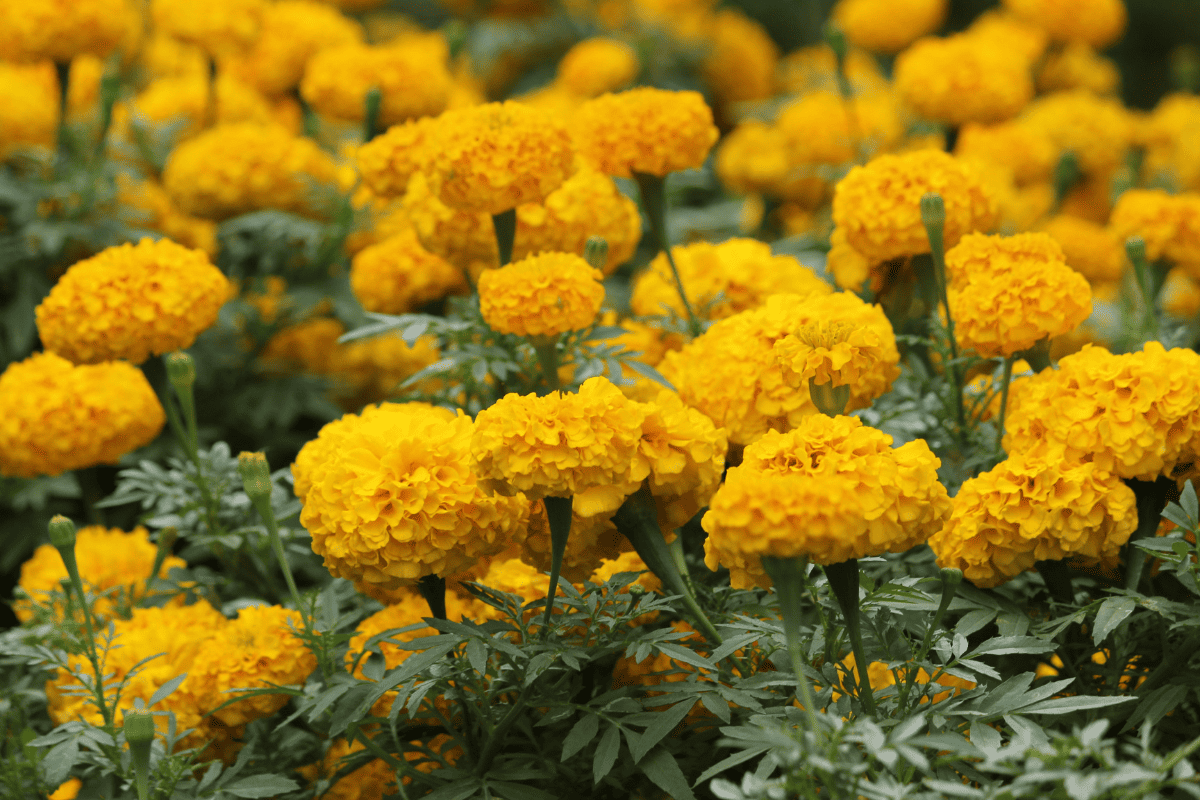
Some people also believe marigolds have various health benefits. From time to time, these flowers are also used to make natural food colorings.
If you are looking for a variety best for deterring pests, try Mexican Marigold or Tagetes erecta. This variety keeps pests, from whiteflies to deer, at bay.
Read more: Do Deer Eat Marigolds? [And How To Prevent That]
3. Black-eyed Susans
Black-eyed Susans, or Rudbeckia hirta, are sunny yellow flowers. Their name comes from the large black or dark brown "eye" in the center that makes this plant pop.
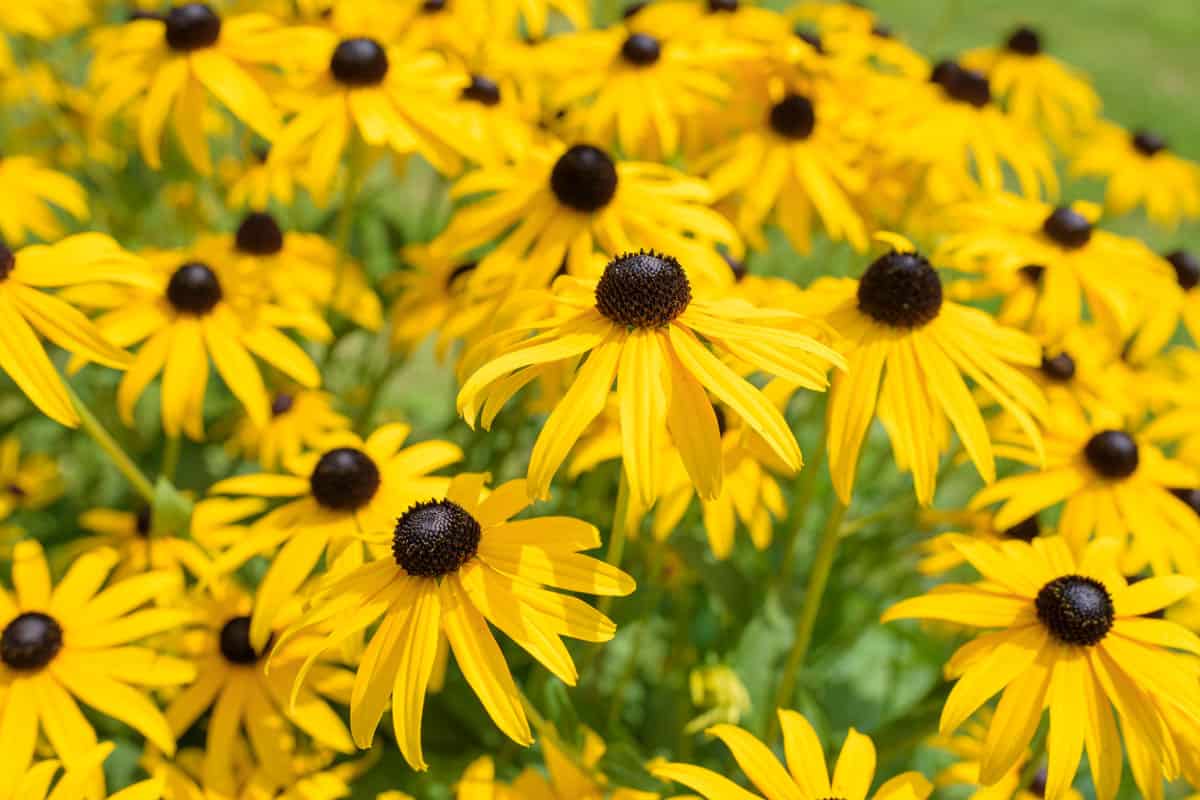
This vibrant flower exhibits a broad spectrum of colors, ranging from the captivating red-orange hues of the Cherokee Sunset variety to the daisy-like charm of other types like Goldsturm.
Regardless of the variety, these flowers have the remarkable ability to repel not just deer but also other nuisances, such as mosquitoes.
Read more: How Tall Do Black Eyed Susans Get?
4. Snapdragon
Snapdragons, Antirrhinum majus, exhibit remarkable versatility and derive their name from the distinct shape of their flowers.
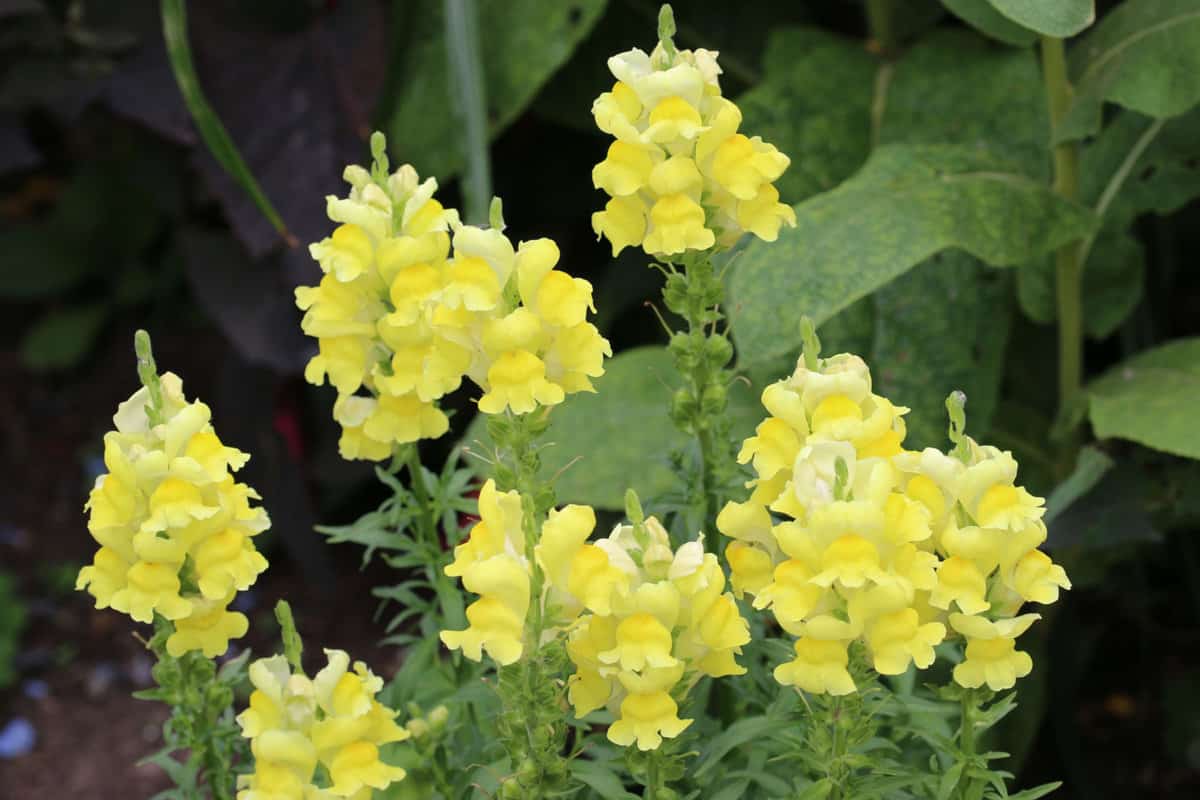
While often found in yellow, these fun flowers come in a dizzying array of colors, from bright pink to bicolor. With so many choices, you are sure to find a color that suits your flower garden.
5. Daffodils
Daffodils, which come from the Narcissus family, are very distinctive bell-shaped flowers.

While most often found in yellow, you can occasionally find them in hues of white. Their bitter taste makes them both deer and rabbit resistant. However, these plants can also be toxic to pets, so keep them out of reach.
Read more: How To Divide And Store Daffodil Bulbs [For Planting Next Season]?
White
1. Shasta Daisy
Shasta daisy, or Leucanthemum × superbum, is a hybrid flower that combines the look of a daisy with deer resistance.

These hardy little flowers have white petals with a bright yellow middle. They are a must-have for perennial flower gardens because of their pest resistance and their lovely pop as a cut flower.
2. Yarrow
Achillea millefolium, Yarrow, are fun little white flowers that often grow like weeds.

These little pops of white not only deter deer but also attract pollinators like butterflies. Yarrow is also an herb and potentially has medical benefits.
Some tribes of Native Americans even used this flower to cure stomach ailments.
3. Snow On The Mountain
Snow on the mountain's (Euphorbia marginata) foliage is what really makes this plant stand out.

Not only are the flowers themselves white, but the foliage is white with a green streak running down the middle of the leaves in most varieties.
This bi-colored pattern makes this plant an outstanding statement piece for any flower garden. To top it off, it is poisonous to animals, so the deer will stay far away from it.
4. Snowdrops
Common snowdrops, or Galanthus nivalis, are petite white flowers that, in many areas, are a signal that spring is coming.
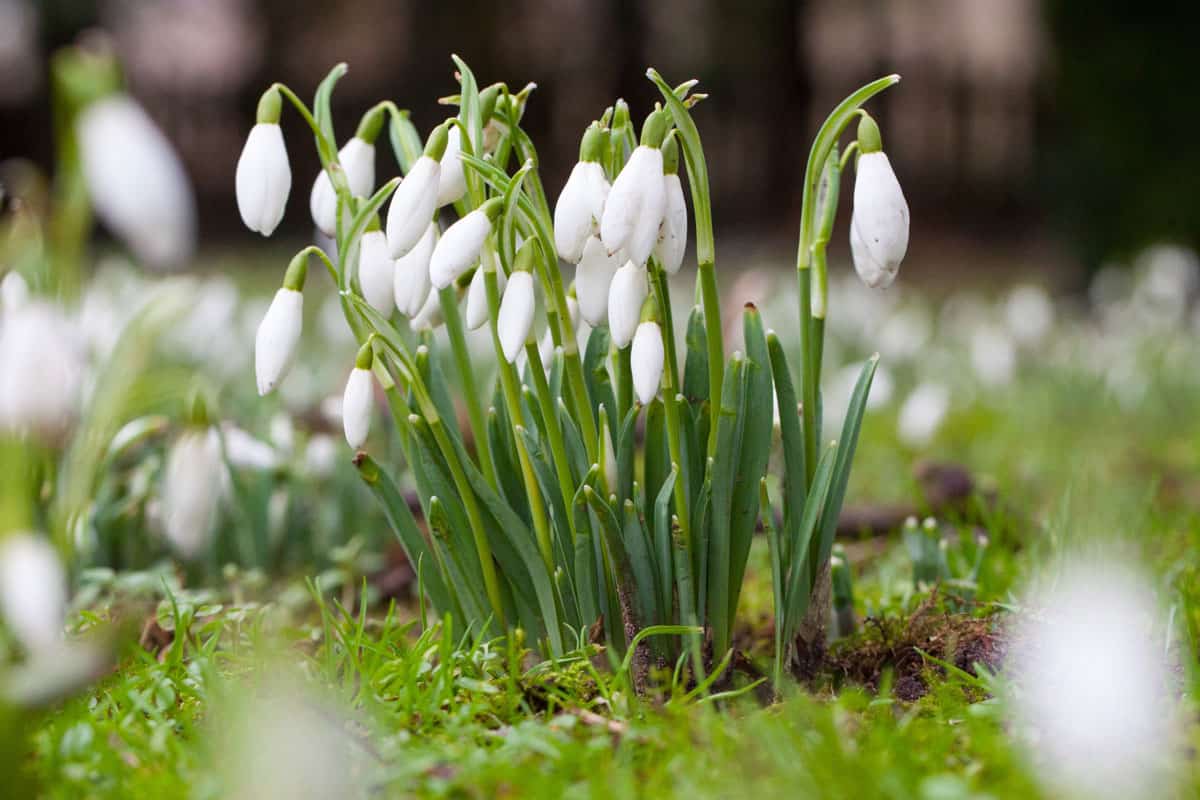
You can often see small bunches of them peeking through the snow. Deer do not like their powerful scent and often do not mess with these little flowers.
Some say their bulbs also irritate the skin so be sure to wear gloves when planting them.
5. Sweet Alyssum
Lobularia maritima, sweet alyssum, is a prolific white flower that is often very easy to grow.

Do research on how sweet alyssum does in your specific area. In some states, like California, this flower is considered an invasive plant.
Likewise, if you are going to plant this, consider putting it in a pot or a contained area.
6. Lily Of The Valley
Lily of the Valley (Convallaria majalis) comes from the same family as asparagus. However, unlike asparagus, they are not edible.

All parts of the lily of the valley, from root to flower, are poisonous to most animals and humans. Including, of course, deer.
Despite popular belief though, it is safe to touch and smell these flowers.
Purple
1. Hyacinths
True hyacinths (Hyacinthus) and grape hyacinths (Muscari) are often mixed up. While they are not technically the same, they have similar appearances and needs.

Similarly, both of these beloved flowers serve as an exceptional addition to gardens, offering more than just their aesthetic appeal.
In addition to their captivating beauty, they also emit a delightful fragrance that effectively deters deer.
2. Bachelors Buttons
Centaurea cyanus is also called bachelors buttons or cornflower. They grow wild in cornfields, which is where their common name comes from.

These flowers are so radiant and colorful that they are often used in floral arrangements, including for weddings. It also comes in a variety of colors, including white and pink, but they are very popular in blue or purple.
3. Iris
Irises are a popular flower that often gets a bad rap for being hard to take care of. However, despite popular belief, these bright flowers can be fairly easy to care for.

There are around 300 species of irises, so the first step in growing them successfully is picking a variety that is well-suited to your area. Bearded irises are the most popular and a good place to start.
4. Aster
Most varieties of asters (Symphyotrichum) are native to America, making them exceptionally hardy.

If you like daisies but wish they had more color, asters range from purple to orange and everything in between.
Common varieties include New England, Aromatic, and Chinese aster. Wild or "wild type" asters are another great option but are challenging to manage.
5. Lavender
Lavandula, better known as lavender, is a fantastic and practical garden flower. Lavenders' strong smell makes them very deer resistant!

Their strong scent is also great for making fragrant oils and other practical items. This diverse little flower is also a great addition to live or dry flower arrangements.
With such a range of possibilities, lavender is a must-have for your deer-resistant garden.
6. Bee Balm![]()
Bee balm, or Monarda, is actually related to mint, so it has a strong smell which deer and other pests hate.
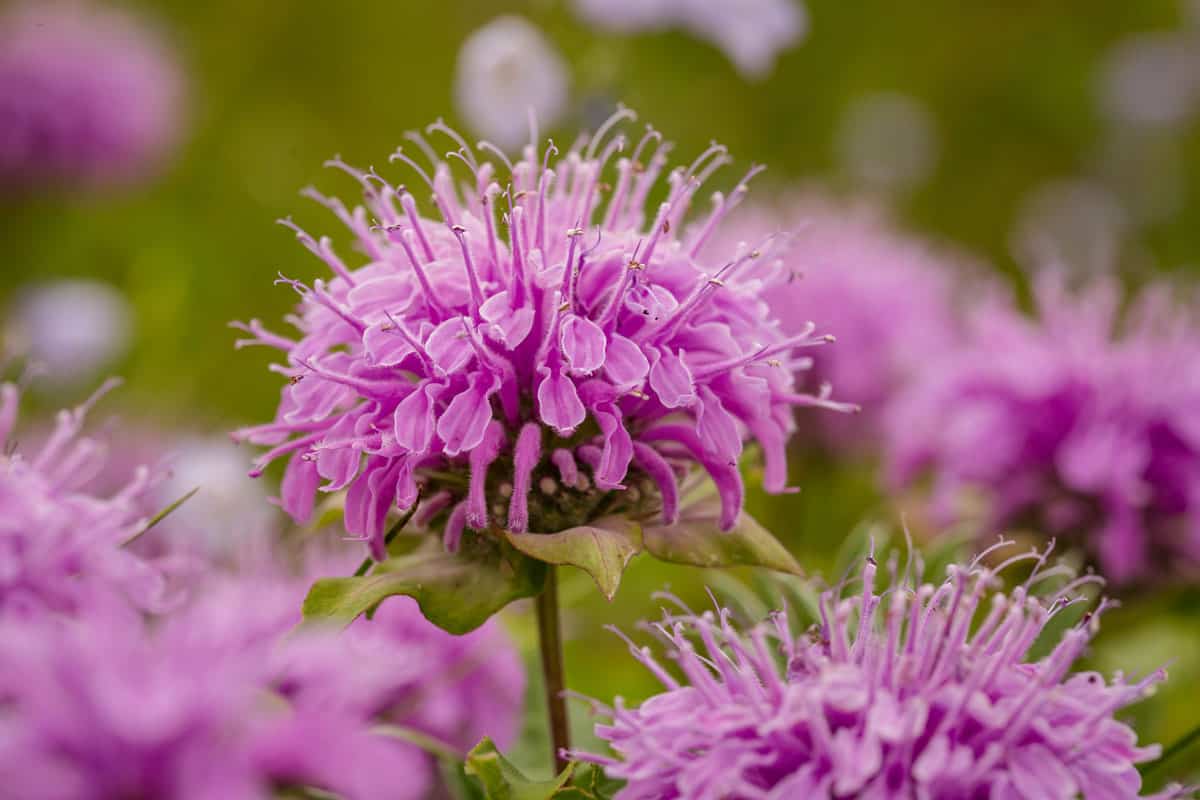
However, as the name suggests, pollinators really love it, so it is great for attracting pollinators to your flower garden.
Like mint, bee balm has various practical applications, such as brewing tea and seasoning dishes.
7. Lilac
Syringa vulgaris, commonly known as lilac, is, as its name suggests, a beautiful purple color.

Variety determines a lot with lilac as far as how deep the color is and the flower's structure. Lilac often grows in a perennial bush, so make sure you decide on a suitable spot for it, as it may not suit every flower garden.
Pink
1. Bleeding Heart
Bleeding heart, also known as Lamprocapnos spectabilis or Asian bleeding heart, got its name for a reason—it indeed resembles a heart!
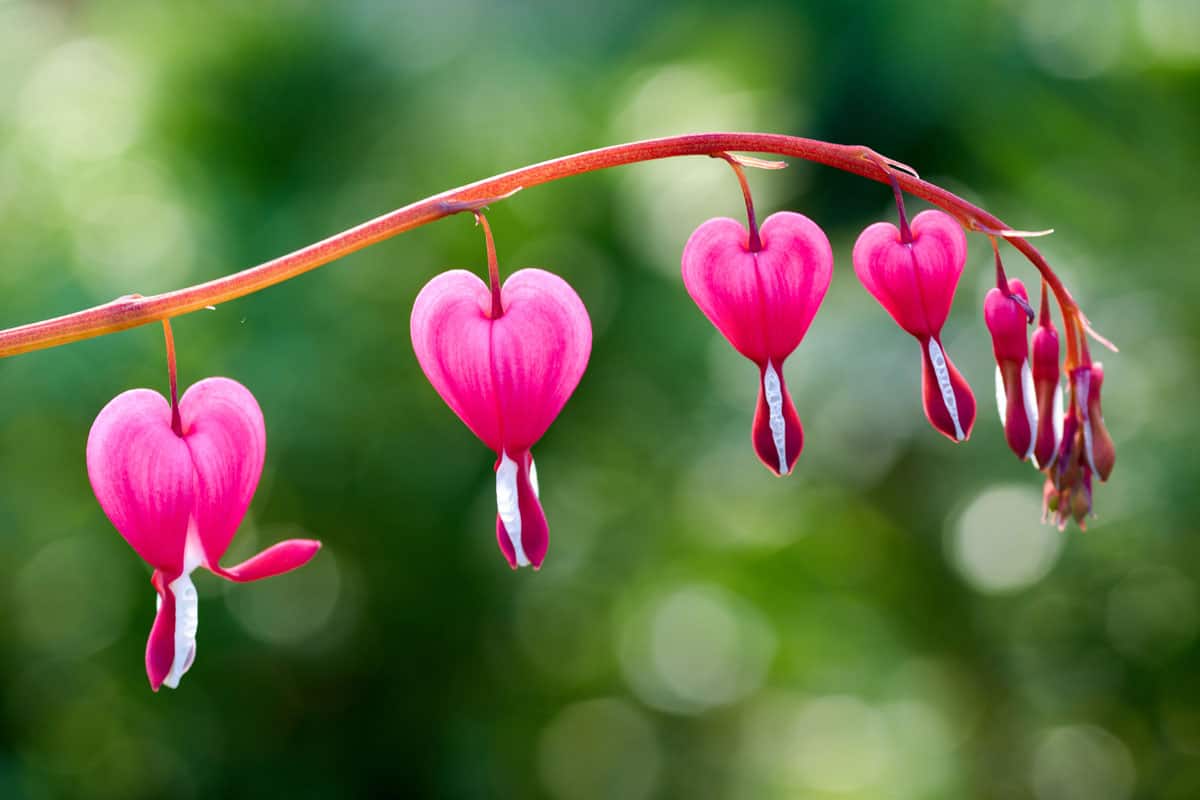
These charming perennials thrive in damp, almost swamp-like environments and prefer partial shade.
Although they can tolerate full sun, their unique needs might make it a bit challenging to find the perfect spot for them in your regular flower garden.
2. Peony
Peonies (Paeonia) are believed to represent prosperity, good fortune, and compassion.

They enjoy moist, well-draining soil, so they are great for containers. Peonies also need a fair bit of extra care, like deadheading, so having them in a pot where you can keep an eye on them is ideal.
3. Zinnia
Zinnias (Zinnia elegans) are absolutely fantastic additions to flower gardens in warm regions.

These low-maintenance flowers are a joy to grow, requiring minimal effort once they are sown.
Although young plants require some watering during their establishment phase, they generally thrive with only occasional supplemental watering.
Zinnias are impressively resilient, standing strong against both pests and heat.
Red
1. Poppy
Poppies (Papaver) are the state flower of California for good reason. In the right conditions, they spread like wildfire. Plus, they have an enchanting and simple beauty to them.

In addition to being great in your garden beds and deer-resistant, short varieties of poppies do well in containers. California poppies (Eschscholzia californica) are especially wonderful.
2. Nasturtium
Nasturtiums, or Tropaeolum, is actually a genus of plants that contains around 50 varieties.

These bright blooms enjoy having plenty of sunlight but are fine with partial shade. A big perk of nasturtium is that they are easygoing and do not mind poor soils.
Blue
1. Bluebell
You can tell a lot about Bluebells (Hyacinthoides) from their name; they are blue with bell-shaped flowers.

These gorgeous blooms are so hardy that they grow wild in Texas and in a few other states. The Texas bluebells are so beautiful and iconic that they inspired the name of the infamous Bluebell Creameries.
If you are looking for a pop of blue that the deer will not mess with, bluebells are a great flower for you!
Creating a Deer-Resistant Garden
By incorporating these deer-resistant flowers into your garden, you can create a beautiful and vibrant sanctuary that remains safe from deer damage.
Choose your favorite varieties, and let your garden flourish with colors that won't become deer food.
For more solutions on deer problems, check out these other helpful articles:
How To Stop Deer From Eating My Flowers? [5 Proven Tactics]
Are Sunflowers Deer Resistant? [And How To Protect Your Plants]
Are you on Pinterest? We created a beautiful image for you to use as a pin. Help us share this list on Pinterest!

